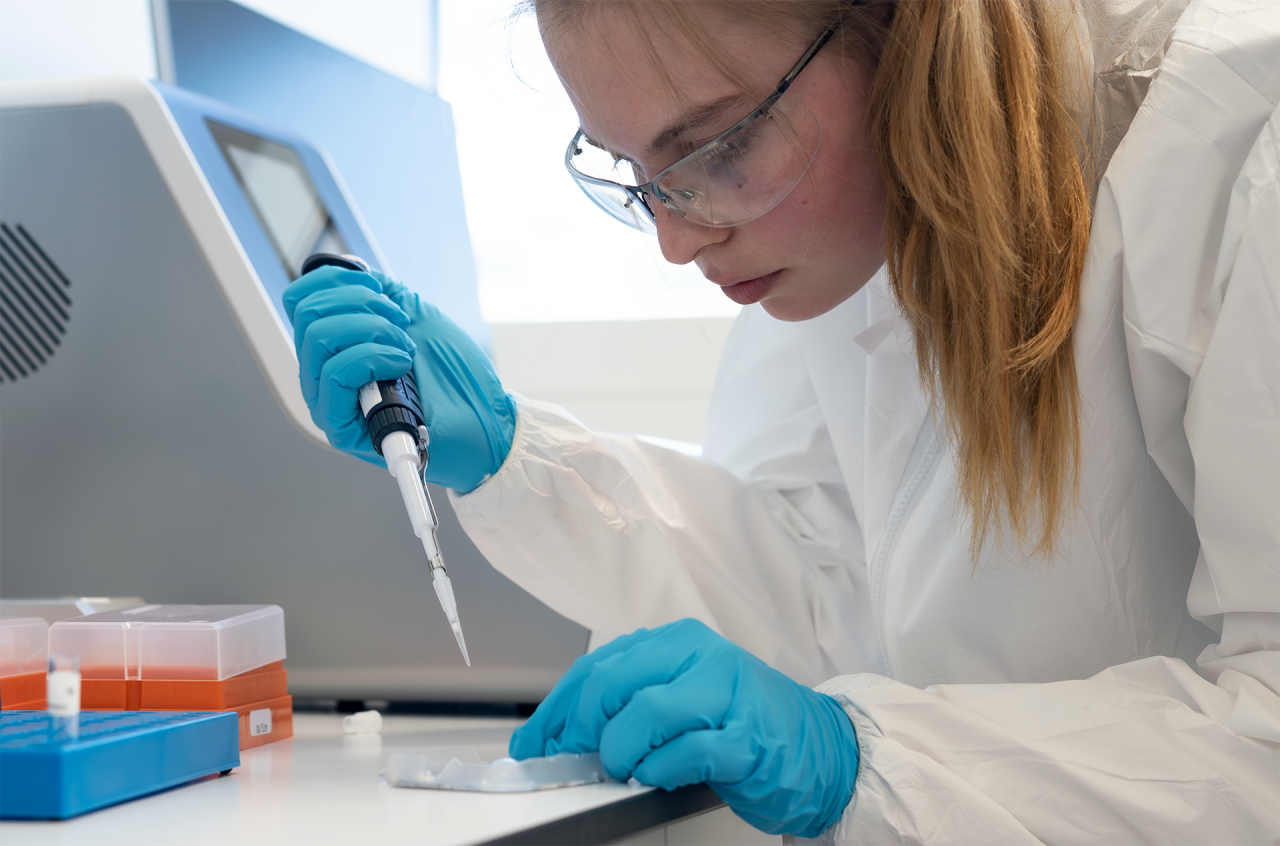Prevention & Management : What to do when an outbreak occurs ?
By the bioMérieux Editors | Reading time: 3 min
Have you ever been in a situation where you were not able to distinguish a simple cough from a real disease which could have dramatic outcomes for a horse and potentially contaminate the whole herd?
When suspicion arises, the initial diagnostic relies on a precise examination by a veterinarian and an early pathogen identification through diagnosis. Good hygiene protocols for both the individual and the collective, and adapted treatment are needed as well. These two pillars play a critical role in safeguarding the health and well-being of our equine companions, as well as preventing potential economic losses and maintaining the overall stability of equine communities.
Management of a sick horse and supportive care
As soon as a horse is suspected or confirmed to have a respiratory disease, it's crucial to isolate the sick individual from the rest of the herd. This can be achieved by placing the sick horse in a separate quarantine area, ideally in a well-ventilated stall with appropriate biosecurity measures in place.
In addition, drugs may be administered as supportive care to see if it is enough to help the horse getting better. These drugs aid in alleviating symptoms such as fever, pain, and inflammation, offering the horse much-needed relief while diagnostic procedures unfold.
A crucial distinction arises when contemplating antibiotic administration. Due to the complexity of respiratory diseases and the diversity of potential pathogens, judicious restraint is exercised in using antibiotics. Waiting for the results of pathogen identification is deemed necessary, as it paves the way for a more targeted and effective therapeutic course.
On top of these measures, in vitro diagnosis tests are commonly used to identify the pathogen responsible. For a better recovery, treatment must be adapted to the pathogen, being aware that it will be very different whether it’s a bacterium or a virus.
The rapidity in obtaining an answer becomes a crucial success factor taking into account that it important to continue individual and herd’s management measures while waiting for the results to unfold.
Key points to manage properly a horse showing respiratory symptoms:
- Consult a veterinarian: Work closely with a veterinarian to confirm the diagnosis, establish an appropriate treatment plan, and receive guidance on managing the sick horse and preventing disease spread.
- Herd Health Assessment: While managing the sick horse, it's important to also assess the overall health of the herd. Regular monitoring for signs of respiratory illness in other horses should be carried out, and any suspected cases should be promptly isolated for evaluation.
- Limit Contact: Minimize any direct contact between the sick horse and other healthy herd members. This includes avoiding shared pasture time, water sources, and feed areas. Separate grooming tools, halters, and equipment should be used for the sick horse.
- Biosecurity Measures: Rigorous biosecurity practices are essential to prevent disease transmission. Personnel attending to the sick horse should follow strict hygiene protocols, including hand washing, wearing disposable gloves and protective clothing, and using separate equipment for the sick horse.
- Administer supportive drugs only, while waiting for the causal diagnosis.
Herd's management when respiratory outbreak occurs
Managing the horses’ health is not only the veterinarian’s job, and it is key that every member of the staff feels involved in biosecurity.
By adopting a proactive and thorough approach to herd management during a respiratory disease outbreak, the barn can effectively limit the spread of the disease and maintain a healthy and stable equine community.
Here's how herd management can be effectively executed in such situations:
- Enhanced Hygiene Practices: Implement stringent hygiene practices across the entire barn. This includes regular disinfection of stalls, equipment, and common areas. Handlers and caretakers should practice hand hygiene, especially when moving between healthy and sick horses.
- Monitor and Quarantine: Regular monitoring of the sick horse's condition is important. Additionally, any new horses entering the barn should be quarantined for a period before being integrated into the herd to prevent potential disease introduction.
- Communication: Open and clear communication is vital among barn staff, trainers, and horse owners. Everyone needs to be informed about the situation, precautions, and any changes in the horse's condition.
Targeted treatment once the pathogen is identified
Different pathogens and causes require tailored treatments, and a correct diagnosis ensures that the horse receives the most effective treatment plan. This can expedite recovery and prevent the development of chronic conditions that could limit the horse's future capabilities.
In that domain, the veterinarian is the person in charge of diagnosing the cause, prescribing the appropriate treatment and recommending environmental action plans which are key to maintaining the horse’s health.

Minimizing the impact of respiratory diseases through management
Early detection and timely treatment are paramount in minimizing the impact of respiratory diseases.
Indeed, the economic consequences of respiratory disease outbreaks can be devastating. An epidemic can lead to decreased horse performance, event cancellations, travel restrictions, and even quarantines, all of which have direct financial implications for horse owners, trainers, event organizers, and related industries. Effective management and diagnosis help curtail the economic fallout by preventing widespread infections and reducing the duration of illness.
Chronic respiratory diseases, if not addressed early, might result in irreversible lung scarring, reducing the horse's quality of life and athletic potential.
How to prevent respiratory diseases as a horse owner?
- Good biosecurity measures: quarantining new horses, limiting contact between horses, and implementing strict hygiene protocols for visitors, equipment, and personnel.
- Clean and dust-free environment reduces the risk of respiratory irritants. This can be achieved through natural ventilation, such as open windows and doors, or mechanical ventilation, such as fans or air conditioning units, regular cleaning of the stable, and proper storage of feed and bedding to prevent mold growth.
- Feed high-quality hay and feed. Provide your horses with high-quality hay and feed and avoid feeding moldy or dusty hay.
- Regular exercise can help improve respiratory health by increasing lung capacity and promoting good circulation.
- Regular veterinary check-ups can help detect respiratory problems early on and prevent them from becoming more severe.
- Vaccination: vaccines are available for numerous pathogens such as influenza, Equine herpesvirus and strangles. A precise calendar needs to be respected if the horses are to participate in races. However, while vaccination is an essential preventive measure, it is important to note that no vaccine provides 100% protection.
- Keep up to date with the latest news about equine respiratory diseases through official surveillance Network such as the Equine Infectious Disease Surveillance in the UK (EIDS), RESPE in France or the National Animal Health Surveillance System (NAHSS) in the US.
Respiratory diseases in horses are often highly contagious. Early and targeted management practices, including quarantine protocols and isolation of infected animals, are crucial in halting the spread of these diseases within equine populations. This not only protects the affected horse but also prevents the emergence of larger-scale outbreaks that can lead to significant economic losses.
Horse owners are not just caretakers, they play a central role in observing for any subtle changes, and promptly seeking veterinary attention at the first sign of illness.
Diagnosis is the cornerstone of proper management of respiratory disease suspicions. Depending on the results, treatment can be adapted to provide a better and quicker recovery for the horse, preserving its health and enabling the owner to act accordingly.
You may be interested in these articles
SHARE THIS ARTICLE:
- Veterinary



